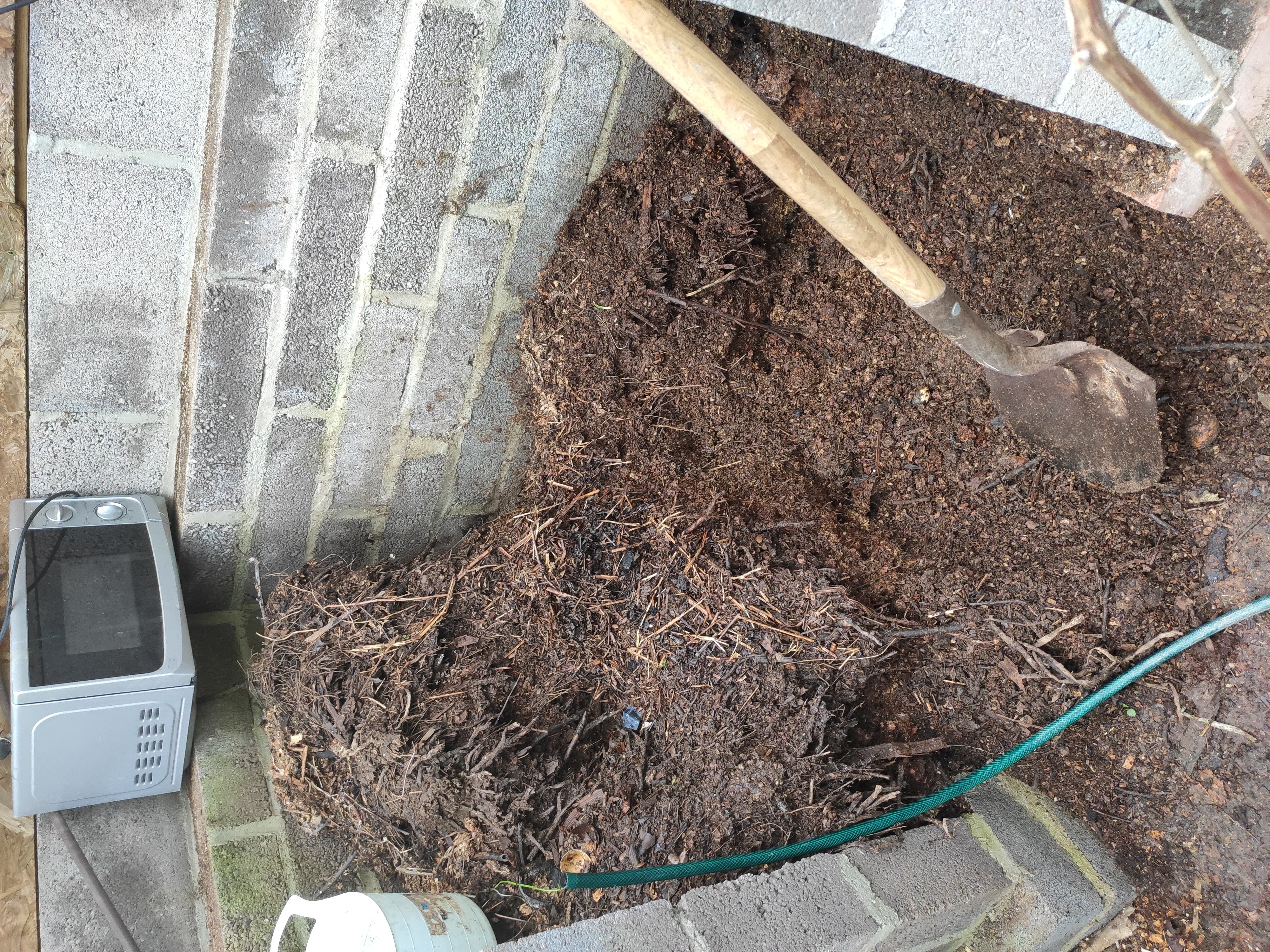Gotchas
No system is perfect, but we're close I think!
Too much good stuff!
If you've got a great big garden or a food forest, you'll have plenty of places you can use your compost and liquid feed. My garden is 8m x 50m, about the size of an allotment. And I sell quite a few small trees in pots, which contain nothing but our own homemade compost. But sometimes, I end up with more liquid feed than I can use. Compost I can always find a good use for. But the liquid?
Generally, vegetables don't need feeding in autumn or winter, and it's best to stop feeding trees by mid-summer so they can stop producing new wood and get down to ripening the wood in good time for winter.
Here are three options for dealing with it:
- Store it in a barrel or other container until the spring. It won't smell. It's quite stable.
- Use it to soak coarse sawdust, and when the sawdust is soaked through, use that as a mulch around trees and shrubs.
- Stop producing it. Stop adding urine to the compost. Send it down the usual channels for the water company to deal with.
Mould
I'm very sensitive to mould spores - I get allergic rhinitis, so if I get a lung full of mould spores, I'm wrecked for the day, with a streaming nose, eyes, and headache.
The compost I produce is thick with mould spores. Commercial compost too has mould spores in it, which is why if you read the small print on the bag, it advises you to wear a mask when using it. My oversensitive nose has never reacted to commercial compost, so I conclude the homemade stuff has far more spores in it.

Some of my compost I shovel through a small door in the side of my greenhouse into a bay where I store it for use when potting.
I find that if I wear a mask - the N95 type that people use to protect themselves from COVID and other airborne bugs - I can use the compost in the greenhouse without triggering the rhinitis. I can also use the compost outdoors, without a mask, without a problem.
If you are not prone to allergic rhinitis, this doesn't mean you can ignore all those spores. The spores are the same as farmers breathe in when they're hay-making (old-fashioned hay-making with small bales) and end up with 'Farmer's lung', which is like COPD, and I think incurable.
So, to be on the safe side, use a mask if you're handling the compost in a greenhouse or potting shed.
Sawdust and other material
There's a joinery workshop near me, so it's easy to get all the sawdust I need. They leave it outside their workshop in big clear plastic bags. I don't take the fine stuff. I usually take the coarsest material. The fine stuff can clump together and spoil the airflow through the heap. The coarser stuff will become finer eventually, but it helps with the flow of air through the heap.
At times, as when I'm at our food forest, I don't have sawdust available. There, I harvest bracken and use that. I don't bother chopping it up - I just use it whole. Again, like the coarse sawdust, the structure helps with the airflow. It will end up small all by itself, eventually looking just like peat with a few thicker stalks still visible (which I just ignore). Bracken is particularly good to use as it is high in potassium. I recommend reading this document if you're going to use bracken, and take note of the advice on avoiding handling bracken in late August when it is full of cancer-inducing spores. In that document, I noticed the line: "Macronutrients, including P, K, Cl, and Na, were lost through leachate drainage declining to about half their initial concentration after three months of composting, although large amounts of water-soluble K still remained at the end of nine months composting (Pitman, 1995)."
I think I know the solution to the loss of the macronutrients (I think they meant micro-nutrients, but the solution is the same).
Rat-Tailed Maggots

One day, while draining my liquid to feed the plants, I saw these weird things stuck to the side.
Turns out, they're called rat-tailed maggots, which sounds pretty disgusting. But they're the larvae of Eristalis tenax, the common drone fly. Which is a hoverfly that looks a lot like a bee. And like bees, they're great pollinators!

So another benefit of collecting the liquid from the heap - you breed your own pollinators!